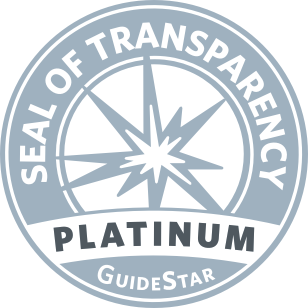Proper treatment of gastroesophageal reflux disease (GERD) always begins with a visit to a healthcare professional to obtain an accurate diagnosis. It is important to recognize that chronic reflux does not get better on its own. Over-the-counter remedies may provide short-term symptom relief, but can mask an underlying disease if used long-term.
Symptoms of GERD
Just about everyone has had heartburn – that uncomfortable burning feeling in the chest after eating a heavy meal – at some point in their life. But, while occasional heartburn is nothing to worry about, heartburn that occurs more than once a week, becomes more severe, or occurs at night and wakes you from sleep may indicate gastroesophageal reflux disease (GERD). And, a visit to the doctor is advised.
Learn more about symptoms of GERD
Treatment for GERD may include medications advised by your doctor and certain diet and lifestyle changes. A combination of approaches, and some trial and error, may be necessary.
Diet and lifestyle changes often begin with what to avoid. These include things that can trigger or worsen symptoms.
Examples of things to reduce or steer clear of in your diet include:
- High fat foods
- Caffeine
- Chocolate
- Onions
- Peppermint
- Carbonated beverages
- Alcohol
- Citrus and tomato products
Coming up with the appropriate diet and lifestyle changes involves discovering what works best for you. Not all triggers and treatments will affect all people in the same way. Bear in mind that when you eat may be just as important as what you eat. A particular food that causes reflux when eaten 3–4 hours before bedtime may be harmless earlier in the day.
Changes to Diet
While no proven “GERD diet” exists, the following foods may help you ease or avoid symptoms.
Fruits and Vegetables
Fruits. While most likely avoiding citrus fruits and juices, like oranges and lemons, choose from a variety of non-citrus fruits such as bananas, melons, apples, and pears among others.
Vegetables. Select from the wide variety of vegetables. Avoid or reduce sauces or toppings that are high in fat or other irritants like tomatoes or onions.
Lean Proteins
Eggs. These are high in protein. However, if eggs are a problem for you, stick to the whites and stay clear of the higher fat yolks, which are more likely to cause symptoms.
Lean meat. High fat meals and fried foods tend to decrease lower esophageal sphincter (LES) pressure and delay stomach emptying, increasing the risk of reflux. Choose lean meats that are grilled, poached, broiled, or baked.
Complex Carbohydrates
Oatmeal, whole grain bread, rice, and couscous. All of these are good sources of healthy complex carbs. Whole grains and brown rice add fiber to your diet.
Potatoes and other root vegetables. These are great sources of healthy carbs and digestible fiber, but make sure to avoid adding onion and garlic during preparation, as these are common irritants.
Healthier Fats
Fat is a type of nutrient – high in calories but a necessary part of your diet. Not all fats are created equal. Generally avoid or reduce saturated fats (usually from meat and dairy) and trans fat (in processed foods, margarines, and shortenings). Try replacing them, in moderation, with unsaturated fats from plants or fish. Here are some examples:
Monounsaturated fats. Examples include oils such as olive, sesame, canola, and sunflower; avocados; peanuts and peanut butter; and many nuts and seeds.
Polyunsaturated fats. Examples include oils such as safflower, soybean, corn, flaxseed, and walnut; soybeans and tofu; and fatty fish such as salmon and trout.
Other Helpful Tips
Chew gum. Chewing gum (not spearmint or peppermint, which can relax the LES) increases saliva production and reduces the amount of acid in the esophagus.
Avoid alcohol. Alcohol is a known irritant that can weaken the LES and trigger reflux symptoms. However, while some people may experience a spike in symptoms after just one drink, others can tolerate moderate amounts. Experiment to see what works for you.
Keep good posture during and after a meal. It’s a good idea to sit up while eating and avoid lying flat for a minimum of two hours after eating a meal. Standing up and walking around after a meal helps encourage gastric juices to flow in the right direction.
Avoid eating immediately before bed. Digestion increases the amount of gastric acid present in the stomach. When you lay down, the ability of the LES to prevent stomach contents from traveling up the esophagus decreases. Occurring together, lots of stomach acid and a reclined position are a recipe for reflux. Timing can vary from individual to individual, but generally, eating a full meal less than three or four hours before bed is not advisable for GERD sufferers.
Eating right for GERD does not have to mean cutting out all of your favorite foods. Making just a few, simple modifications to your current diet is often enough to help reduce the discomforts of GERD. The goal is to create a diet based on a healthy variety of foods that include fruits and vegetables, lean sources of protein, complex carbohydrates, and healthy fats.
If you suspect that foods may trigger or worsen your symptoms of GERD, try keeping a one week daily diary.
Published in Digestive Health Matters, Vol. 23, No. 3.









